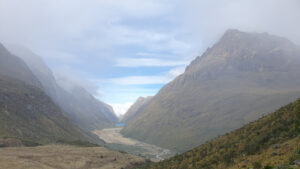Abstract/Description
Particulate matter (PM) is among the pollutants with the strongest evidence for public health concern, in particular the exposure to ultrafine particles (UFP) with diameters of less than 0.1µm has a high risk of adverse health effects and premature mortality. UFP may occur in high number concentrations. In the urban atmosphere, UFP originate both from combustion processes like road traffic and from the nucleation of precursor gases like oxidized VOCs of anthropogenic and natural origin. In fall 2023, particles in the size range of 10 to 1000 nm were measured with a Scanning Mobility Particle Sizer (SMPS) and were supplemented by UFP high-frequency measurements with a Partector-2 instrument (Naneos). Here, we present results on the concentration and distribution of UFP, their potential sources and on new particle formation.


